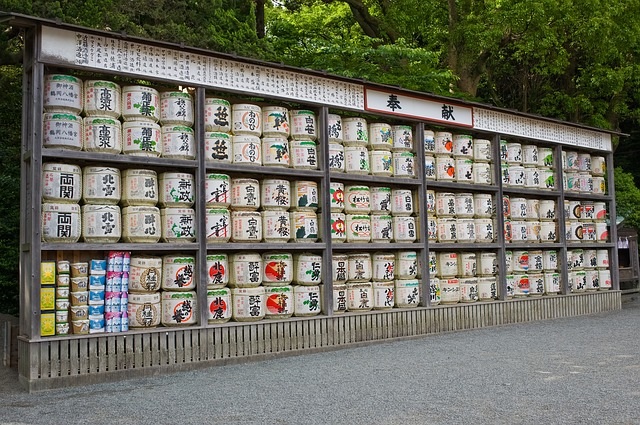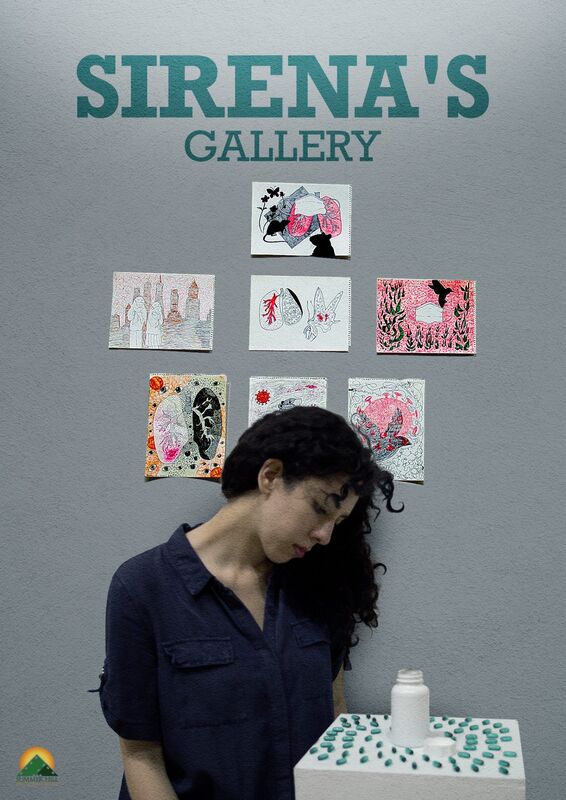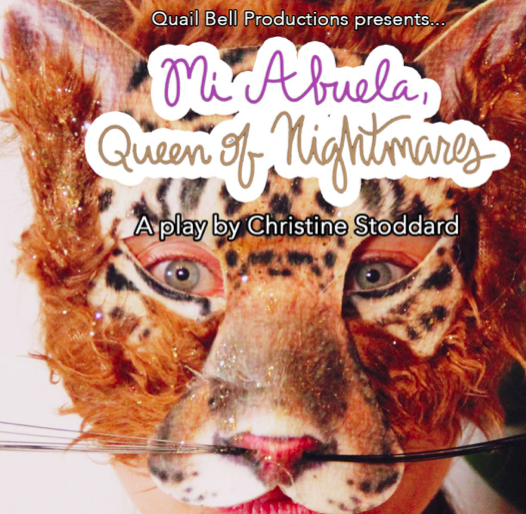|
The Breadcrumbs widget will appear here on the published site.
Raikou and the Shi-Ten Doji
By Edward Ahern
QuailBellMagazine.com
#Unreal #Fiction #ChineseFolklore #RollingThunderInTheMountains #SakeAndWine #Shi-TenDoji #Raikou
Visit our shop and subscribe. Sponsor us. Submit and become a contributor. Like us on Facebook and follow us on Twitter.
This is a retelling of three interrelated folk tales transcribed by William Elliot Griffis before 1887. The language is modern, but the spirit is hopefully still close to what he wrote, and in turn, to what a Japanese storyteller might have related from his bamboo-curtained stall in Yanagi Cho. My native-speaking Japanese friends tell me that we Anglophones have been getting the name wrong in our translations. Raiko uses the feminine ending on the name. They suggest using Raikou instead, being more masculine and closer to the Japanese pronunciation. I’ve used Raikou, but if beaten upon would change it back to the traditional, in English, Raiko.
A long time ago the capital of Japan was Kyoto, the City of Blossoms. The Mikado and his court lived in Kyoto, a place of beautiful shrines and temples. But the capital was troubled with many thieves and murderers who snuck through the city gates at night. Even worse were the evil imps, called onis, with horns, long fangs, and tiger-skin loin cloths. These onis would prowl the Kyoto streets by night, grab people by their hair, drag them through the Rajo-mon Gate into the mountains, rip the meat from their bones, and eat it. The young women they did not eat they kept as slaves. The bravest captain of the Mikado’s city guard was Yorimitsu of the Minamoto family, called most often Raikou. And the bravest of Raiko’s guardsmen was Watanabé Tsuna. It was Tsuna that Raikou ordered to guard the Rajo-mon Gate at night.
Tsuna took his post at the red pillar of the Rajo-mon Gate and watched. The night was filled with heavy rain and wind, and the lacings on Tsuna’s helmet, armor and sandals were soon soaked through. But wet or not, his carefully honed sword could slice through a drifting hair.
Tsuma kept his watch as the great bronze bell of the temple on the hills tolled the hours. A single massive stroke rang the hour of the rat: midnight. Two hours later the hour of the bull sounded, and an hour later, the hour of the tiger. The driving rain had softened, and as Tsuna became less uncomfortable he also became more sleepy. He shook and pinched himself, and even pulled his little knife from the wooden scabbard of his short sword and pricked his leg repeatedly, but no use. He leaned against the red pillar and fell asleep. An oni had been squatting on the cross piece on top of the gate waiting for this chance. He slid down the pillar like a monkey, grabbed Tsuna’s helmet with his talons and began to drag him through the gate. But Tsuna was awake in an instant. He grabbed the hairy wrist of the imp with his left hand, and with his right hand drew his sword and, swinging it over his head, sliced off the demon’s arm. The oni howled with pain, jumped back on top of the gate and disappeared into the clouds. Tsuna waited, clutching the severed arm in one hand and his sword in the other until dawn broke, but all was quiet. The sun began to brighten and dry the pagodas and temples and gardens of Kyoto, and the nine circles of flowered hills as well. When Raikou saw the arm he praised Tsuna highly and rewarded him with a silken sash. But then Raikou said, “Kiotsukeyo. Be careful. For an oni’s arm can still rejoin its owner within a week of being cut off. Lock it up, and watch it night and day.” So Tsuna went to the stone cutters who made images of Buddha, and mortars for pounding rice, and coffers for burying money. He bought a heavy stone strong box with a grooved lid that slid out only after touching a secret spring. He had the strong box carried to his bed chamber and put the oni’s arm in it. Watanabé Tsuna locked his house gate and all his doors, and kept watch day and night, never letting anyone who was not known to him see the box. Six days passed quietly, and Tsuna began to think that the arm was already his trophy. He ordered that the box be taken from his bed chamber to his day room. He took off his armor and put on his court robes, and twisted a fringe of rice straw as a token of victory. Late that evening there was a feeble knock at the gate outside Tsuna’s room. “Who’s there?” he called out. The squeaky voice of his old aunt replied. “Just me. I want to see my nephew and praise him for his bravery in cutting off the oni’s arm.” Tsuna let her in, carefully locking the door behind her, and helped the old woman into the room. She knelt on the tatami mats, close to the strong box, and began to praise Tsuna for his skill. He felt very proud. Now all this time the woman’s right arm was covered by her embroidered wanpisu, but she waved her left arm as she talked. His beloved aunt began to beg Tsuna to see the arm. He said no at first, but finally gave in because of his affection for her, and slid back the heavy stone lid. “That’s my arm!” yelled the old woman, who grabbed the arm and, changing into an oni, leaped up to the ceiling and jumped through the smoke hole in the roof. Tsuna ran out of the house to shoot at her with an arrow, but she was already in the clouds, grinning horribly back at him. When Raikou heard of this, he deduced that the demons were hiding in the mountains of Oyé in the province of Tango, and decided to go after them. But just as he had made up his mind he fell sick, and each day grew weaker and paler. When the onis heard of his sickness they sent a monster to torment Raikou, an imp called Mitsumé Kozo. This imp had a double snouted hog nose, three hideous blood-veined blue eyes and a wide mouth full of tusks. The imp snuck into Raikou’s bed chamber and began to leer horribly at him, sticking out his warted tongue and pulling down the blood veined lids of his three eyes with his hairy fingers. Raikou lay in the bed, seemingly too weak to move. The imp crept closer and closer until Raikou, with what little was left of his strength, pulled his sword out from under the bed sheets and sliced into Mitsumé Kozo’s double snout. The imp howled and ran away, leaving a trail of blood drops. Tsuna and the other guards congratulated Raikou on his blow and then immediately set out to track down and destroy the imp. They followed the blood drops a long way, until they came to a cave in the mountains. Inside the cave they could see a spider, six feet tall, with legs as long as fishing rods and as big around as daikon radishes. The spider had two great yellow eyes like camp fires and a gaping sword slash across its snout. Tsuna knew that if they tried to fight close to the spider, they were in danger from its claws. So he tore a thick sapling out of the ground and, holding it like a lance, ran at the spider, pinning it in the sapling’s roots. The other guardsmen tied up its long thick legs and stabbed it to death. By the time they returned to Kyoto, Raikou had recovered from his illness. From a gold brocade bag he took out the commission he had received from the Mikado. “Reikou, sonata ni oni taji o meizuru. I command you, Raiko, to chastise the onis.” Raikou, Tsuna and two other trusted guardsmen disguised themselves as komuso, wandering priests of the mountains. They put large straw hats shaped like wash bowls over their helmets, and covered their armor with cheap peasants’ clothing. Then, after worshiping at the shrines, they marched off into the pathless mountains of Tango. These mountains were desolate, for no human went into them except for an occasional woodcutter or charcoal-burner. There were no bridges over the rivers and many steep crevasses to cross. But Raikou and the three guardsmen didn’t hesitate, felling trees to cross the streams and making vine ropes to lower themselves into the chasms. Finally, high up in the clouds, they came to a dense grove of trees. They found a pretty girl washing blood-spotted clothing in a stream. “Why are you here?” they asked. “Ah,” she sighed, “you must go at once. Demons live here, onis that eat the meat of man. They will eat yours as well. Look!” she said, pointing to a pile of white bones. “Go down the mountain faster than you came up.” And then the girl burst into tears. Raikou was touched by her sadness and beauty. “How is it that you are living among these cannibal onis?” he asked. She blushed and said sadly, “They eat men and old women, but keep the young women to wait on them.” Raikou patted his chest where he kept the brocaded bag with the imperial order. “Please show us the way up the cliff to the den, so that we may avenge your shame and cruel treatment, as well as the deaths of the loyal subjects of the Mikado.” They had climbed two hundred feet when the path suddenly turned and they were in front of the castle entrance, a doorway built between massive boulders and covered with vines and mosses. When they glanced backward, far, far below and away they could see the red pagodas, white temple gables and castle towers of Kyoto. Without fear, they walked up to the onis guarding the gate and demanded to see the chief oni, the Shi-ten doji. The guards leered and admitted them, thinking that a future meal had just walked up to them. When they had filed through the doorway they discovered that the oni’s castle was really an immense cave, with a banquet hall able to seat hundreds of people. The floor of the banquet hall was covered with sea-green mats of rice straw, and the walls with hangings of fine silk. On the tatami mats were tables and silk cushions, arm rests and drinking cups, everything needed for a feast. At the end of the hall, on a raised dais, seated on cushions stuffed with swans’ down, leaning on a solid gold arm rest, was the Shi-ten doji. He was a demon of stern and horrible appearance, with a bright red body that was round and fat, like a grown-up baby. Two short horns poked through his soot black hair. Standing around the Shi-ten doji were a dozen young women, as pretty as any Raikou had seen in Kyoto. Their faces did not completely conceal the misery they felt but could not show. Other girls and young women stood next to each of the onis in the hall. These onis were seated or laying full-length on cushions, waiting for their lunch and drinking sake from men’s skulls. Lunch was brought in by other onis: human flesh still on its bones. The onis all began to eat, gnawing meat from bone and making noises like the pounding of a rice mill. Raikou knew that he needed to lower their suspicions, and volunteered to dance “The Kyoto Dance” for which he was famous. He stepped into the center of the hall with a fan in one hand, and danced so gracefully and easily that the onis screamed with delight and clapped. Even the girls and women forgot their troubles and smiled at the beauty of the dance. When the dance was over and Raikou had received the congratulations of the Shi-ten doji, he took out a bottle of sake from the folds of his robe. “This,” he said, “is the best wine in Sakai. Please drink it with my compliments.” The Shi-ten doji accepted the wine and drank heavily. He addressed the other onis in the hall. “This is the best liquor I ever tasted. You all must also drink.” And each of the onis took a full drink, also swearing that it was the best sake they had ever tasted. But Raikou only smiled to himself. For the best herbalist in Kyoto had drugged the wine with a powerful sleeping potion. In very few minutes the Shi-ten doji and all his onis were asleep, snoring like rolling thunder in the mountains. Raikou and his guardsmen whispered to the girls and young women to leave the banquet hall. Then, drawing their short swords, they stepped from oni to oni, silently slitting their throats. When they had killed all of the other oni, they gathered in front of the Shi-ten doji. Raikou turned toward Kyoto, reverenced the Mikado, and drew his long sword. He swung with all possible strength, and sliced completely through the Shi-ten doji’s neck, severing its head. The bloody head flew up into the air, gnashing its teeth and rolling its yellow eyes. The horns on its head sprouted to an impossible length. Its jaws began opening and snapping shut. The head whirled around the hall several times and then flew at Raikou’s head, biting through the straw hat and into the steel helmet. But its strength was spent, and the head dropped to the floor with a thud. The guardsmen examined Raikou’s head, but he was unhurt: The helmet had protected him. The four men gathered and buried the bones of the victims, setting up a stone marker on the spot. Then they divided the onis’ treasure equally, set their castle on fire, and assembled the girls and young women for their return march to Kyoto. When the girls were restored to their families many desolate homes were made joyful, and many mourning garments were put into storage. The Mikado honored Raikou by making him a Kugé, a court noble. And this story began to be told. Owari (The End) CommentsComments are closed.
|








